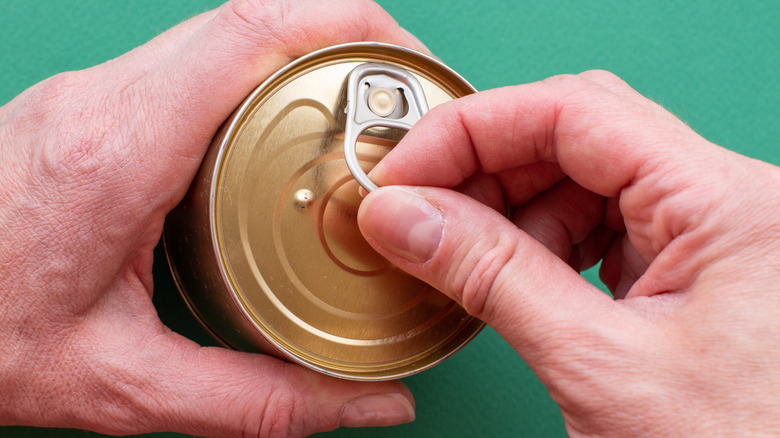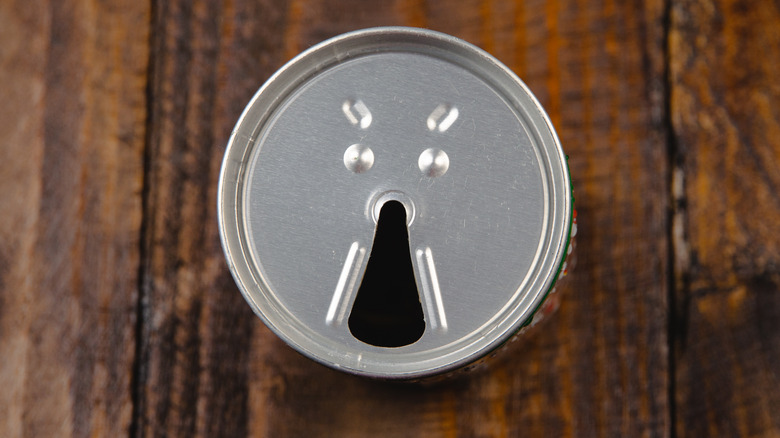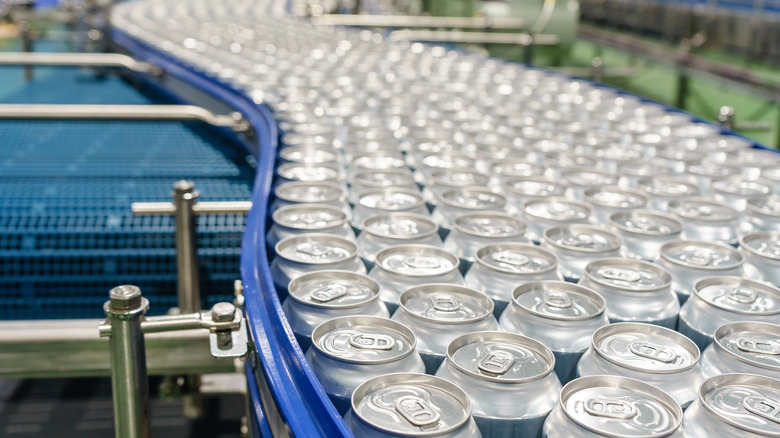Why Only Some Canned Food Is Equipped With Easy Pull Tabs
Anyone who's ever moved, visited an ill-equipped Airbnb, or gone camping has likely found their snack or quick dinner plans ruined by the lack of a can opener. There are ways to get that can open without one, but it takes a lot more work. They're just one of those kitchen appliances that you kind of forget about until you don't have one. Unless you're using a can with a fancy pull tab that is.
A simple pull tab makes can openers essentially obsolete, so why doesn't every can have them? Sadly, these convenient tabs are more challenging and expensive to manufacture than your standard seamless can seal. This is largely because the lid itself and the tab that cracks it open need to be manufactured separately. The tab is then riveted onto the lid.
The ubiquitous nature of canned sodas and foods makes it seem like a simple enough process, but up until recently, it was such a challenging and expensive process that it was only used by the largest manufacturers. In fact, the idea of these easy-open cans is a fairly modern idea that hasn't even been around for a century yet.
History of pull tabs
Before the modern era of convenience, taking a drink on the go required an accessory. Bottled beers and sodas require the same bottle openers we're familiar with today, but canned beverages were sealed up with flat lids that would look more similar to a modern can of vegetables. A device called a "church key" was most commonly used to then poke one hole in the top to drink from, and another on the opposite side to release air and let your drink pour smoothly. There were also "cone" topped beer cans that used the same opener as a bottle, but they were still a long shot from the convenient cans we know today.
Then in 1963, engineer Ernie Fraze invented the first pull tab can lid. The product was purchased by Iron City Beer in Pittsburgh, PA, and was an instant hit for its ease of use. It essentially made the classic lids obsolete for beverages.
This design wouldn't make its way onto food can lids until 1980. 40 years later, they still aren't the most commonly used food lid on the market because of simple economics, and some miraculous engineering.
Why are they more expensive?
Besides the cost of riveting the tab to the lid itself, scoring the opening on your can takes a lot of engineering. For soda or beer cans, you need to create a pressurized environment that can make it through temperature changes without the bubbly liquid inside rupturing the can. Adding a pull tab means that you also have to score the opening onto the lid. It has to be strong enough to not burst open, but also weak enough that you can easily open it to quench your thirst.
The same can be applied to food cans, and because they aren't as commonly taken on the go, the cost of adding this pull tab just doesn't add up. According to a survey by marketing research firm Ipsos that was done in 2014, most Americans say they would be happy to cover these costs for the added convenience. Still, some companies just aren't willing to raise their prices and deal with the extra manufacturing complications of these lids to make things more convenient for customers. Don't go throwing out your can opener any time soon.


